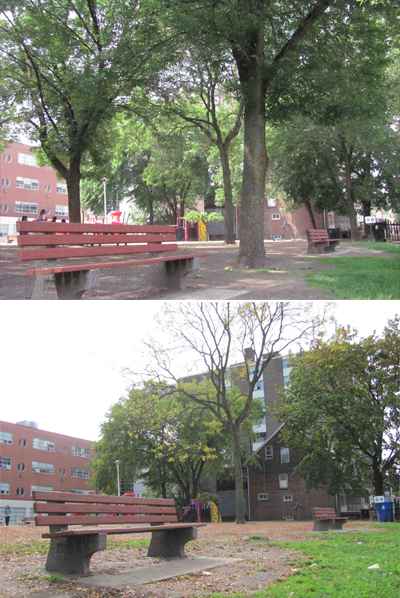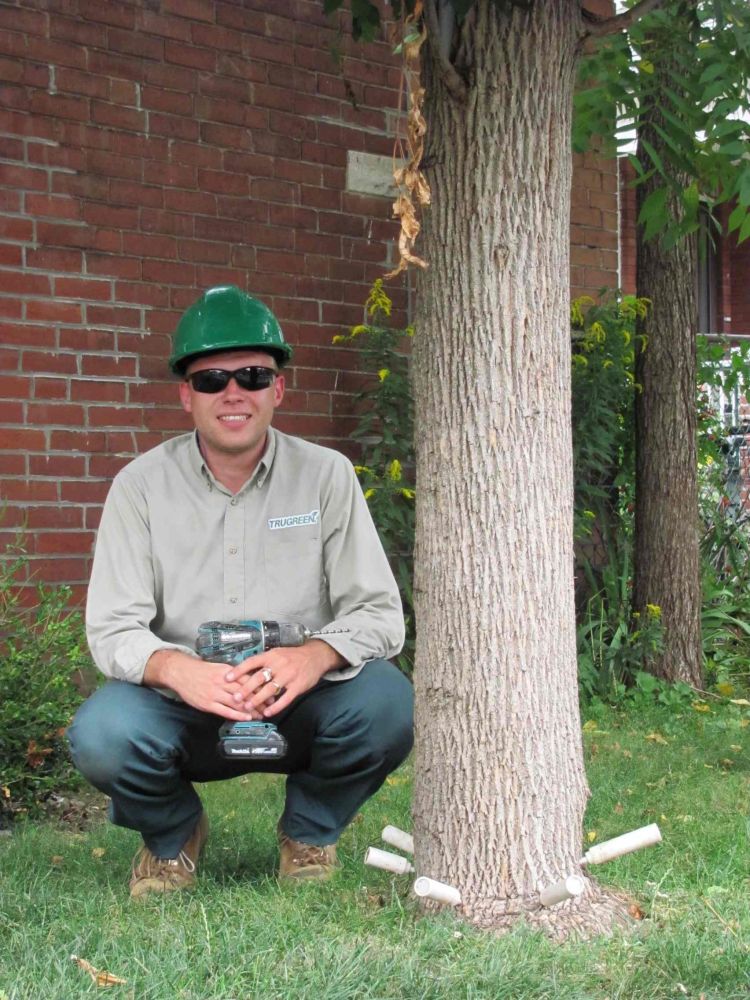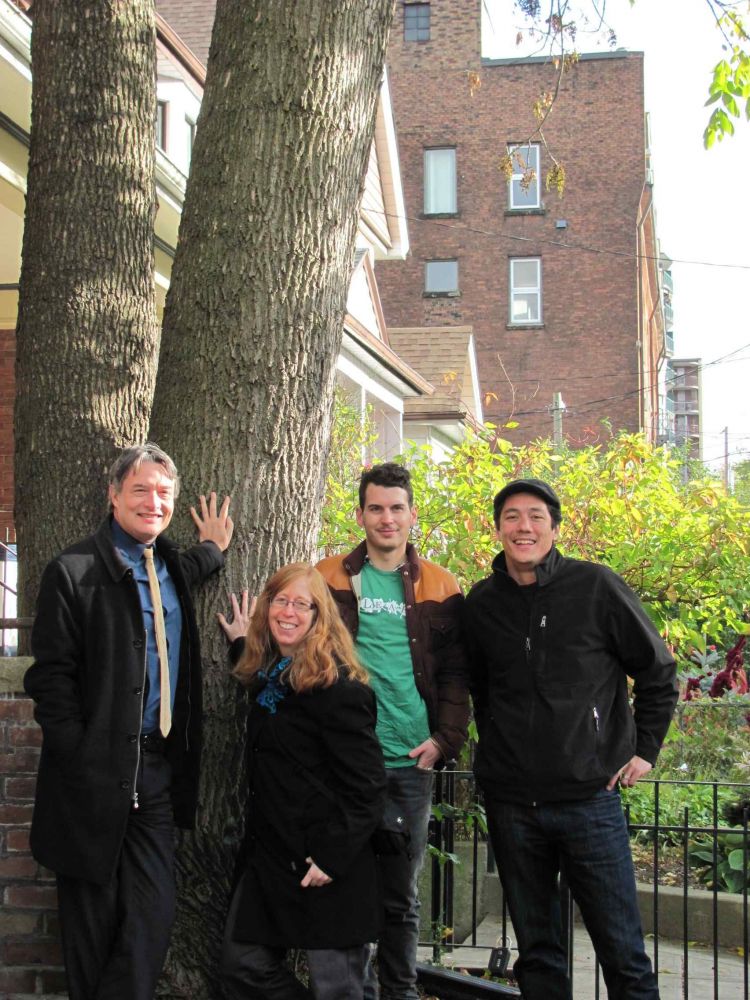This is part three of a three-part series by Jane Clark called “How I Spent My Summer Vacation.”
We sat down to strategize. We were finally finding some ash trees, but we weren’t always finding the homeowners, and going door-to-door was a slow process. We needed more ways to alert people to the urgency of the situation. I tried to think of stakeholders—groups or associations that might be receptive to the message—and submitted an article to the editor of the Parkdale Horticultural Society newsletter.
Generously, Green 13 shared their “Ash Tree Alert” signs, which we began displaying at the base of neighbourhood ash trees. I also decided to try a flyer, which we plastered all over TTC stops, coffee shops and laundromats along Roncesvalles. The tree signs were left untouched, but within only a few hours of going up, we were horrified to see that many flyers had already been torn down.

Queen Victoria Public School playground, June, 2013 / Playground three months later, after removals
A sexy phrase kept buzzing in my head—“bulk treatments.” I knew that if we could convince enough neighbours to consider treating their trees, I might be able to arrange for a licensed tree-care company to give everyone a better rate. I contacted one neighbour who had her tree treated and found a company that would honour a collective rate if I were to coordinate the treatments. I just needed to find the patients.
With the most important lessons of the summer—collaborate and follow up—in mind, I reached out to a member of the Roncesvalles–Macdonell Residents’ Association (RMRA). She asked me to draft a short appeal for the association’s membership list, and almost immediately, people began requesting information and quotes, which I passed along to the tree-care company.
I began to go over the tracking sheets from the summer canvassing, noting all of the addresses with privately owned ash trees. I then tried finding the homeowners, sometimes returning two or three times— always leaving behind info and an urgent plea. I admit I had low expectations for owners of multi-unit buildings, but to my surprise, I encountered several landlords and property managers who felt that it was in their best interest to treat their trees.
The last week of August was wild. Every day I relayed more requests. I was given a cut-off date for new bookings. I ignored it. To speed things up, we stopped ringing doorbells and instead just dropped off info, noted the presence of ash trees for follow-up and moved on. All the while, I kept after the homeowners on my follow-up list. I went from feeling like a travelling salesman to feeling like a full-on pest.
With the deadline only days away, my fellow Ambassador, Marg, and I met for one last evening spin through the ‘hood, driving along as many uncanvassed streets as possible before it grew too dark to identify the trees. We said goodnight and hung up our canvassing hats for the year.

Stan Tomczak of TruGreen treating an ash tree
As of August 31, our small west end canvassing team had helped to treat 25 ash trees. And in the process, we visited a total of 5,864 households in Ward 13 and 2,981 in Ward 14, getting the message out about the value of our urban forest.
When you start as a newbie campaigner, you know there’s a lot to learn, and I certainly learned a lot this summer—much of it about myself. I find it hard to go door-to-door, to host a meeting, or to be interviewed on the radio. But in a crisis, you fight to protect what you love.

From left: Councillor Gord Perks, volunteer Jane Clark, LEAF's Matthew Higginson, and homeowner Leif Moore gather beside one of the largest ash trees treated this summer.
Every twelfth tree in Toronto is at risk. With that knowledge, you take a few deep breaths and you find a way to do something. We started knocking on doors. And I know other battle-hardened EAB Ambassadors will be back to join me next spring to seek out the untreated ash trees of Toronto, while also turning our attention to the new EAB front lines in York Region and cottage country.
Will I see you in the trenches for the next campaign?
Jane A. Clark is a volunteer and freelance writer based in Toronto’s west end. You can listen to an interview with her about EAB on CBC's Fresh Air here. The EAB Ambassador Program is supported by Ontario Power Generation's Biodiversity Program, Live Green, a project of the City of Toronto, York Region and Ontario Trillium Foundation.
